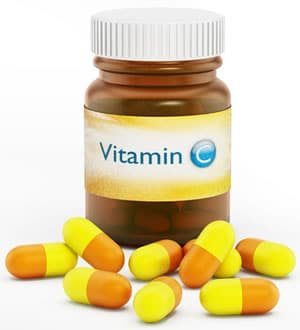This post is by Eric Perrott, a trademark attorney at Gerben Law Firm, PLLC.
Whether you are white labeling or private labeling, it’s important that you understand the role that trademarks can and do play in your Amazon store’s success.
White labelers order unbranded goods from a manufacturer and apply custom packaging, while private labelers procure and offer products exclusive to their Amazon store. Both approaches allow sellers to build a brand and market products under that brand, charging a premium for their items.
Let’s take a look at a few trademark tips that these Amazon sellers can’t afford to ignore.
Tip 1: Pick a strong trademark
There’s no denying that it’s difficult to pick a good name. As a seller, you want a name that will tell the customers about the products you offer, but you also want it to be unique enough to be distinguishable as brand name.
Why is that so important? Not only so that customers can easily find your products, but also so you’ll be able to protect your name under US trademark law and register it for federal protection.
Whether or not you are able to protect your trademark depends on where it falls on what’s known as the “spectrum of distinctiveness” in trademark law. What this basically means is that the more a trademark describes the products it is applied to, the less strong it will be and the harder it will be to enforce against others using a similar trademark.
Trademarks that consist of names that are abstract, fanciful or arbitrary are much stronger and offer a much wider scope of protection – something all Amazon sellers should keep in mind when selecting your storefront/seller name as well as the name for your white labeled or private labeled product.
The spectrum of distinctiveness
As I previously mentioned, the highest level of protection is given to arbitrary or fanciful marks, which are trademarks using words that are completely made-up, like KODAK or GOOGLE, or words that have no connection to the products or services they are used on, like APPLE for computers or DELTA for an airline. These are the strongest trademarks and are given the widest scope of protection possible because customers had no prior connections with the word before the trademark owner began using it.

From a marketing perspective, however, these strong trademarks do not inherently provide any description of the product, potentially leaving the customer guessing as to what is being sold. It’s easy to see how it may be difficult for you as an Amazon seller to break into an industry if your name does not give a consumer enough information.
On the other end of the spectrum are generic trademarks, which can never gain trademark protection. This would include names like USB STICKS for USB storage devices or VITAMIN C for a seller that offers Vitamin C supplements. These generic names should be available for anyone within the industry to use and cannot be protected under trademark law.
Up a notch from generic trademarks are “merely descriptive” trademarks, which are trademarks that directly describe the goods and services provided by the trademark owner. These would include names like DISCOUNT SOCCER APPAREL (for soccer equipment) or GREAT ELECTRONICS (for an electronics retail store).
These types of trademarks can only be protected once the trademark owner can show that, through extensive advertising, sales and length of use, consumers within the industry think only of that trademark owner when they see the descriptive mark. This is how widely-known trademarks like AMERICAN AIRLINES and BEST BUY are able to stop competitors from using similar trademarks – both companies have decades of use and hundreds of thousands of dollars’ worth of advertising annually.
The sweet spot for trademarks
In between descriptive trademarks and arbitrary trademarks are the “sweet spot” of trademarks that don’t directly describe the products but still relate to them. The extra mental step involved for the customer to connect the meaning of the trademark with the goods and services is enough to provide immediate trademark protection while still benefiting from a mark that may have some underlying meaning to consumers.
Called “suggestive marks” because they hint at, rather than directly apply to a particular industry, they include CHIPOTLE for a Mexican-inspired restaurant and MR. CLEAN for cleaning supplies.
Neither trademark directly describes the products or services offered by the company, but they certainly provide consumers with additional information. While these trademarks are not given the same wide scope of protection that arbitrary marks are given, they are still powerful trademarks that can be immediately protected and registered with the USPTO – we’ll talk more on that in just a bit.
Trademark example
Let’s look at an example: Imagine you’re an Amazon seller who has sourced a high-quality private manufacturer of colored pencils for reasonable prices.
You select the name LONG-LASTING COLOR for your colored pencils and, without consulting an attorney or considering the spectrum of distinctiveness, you purchase 10,000 colored pencil sets with custom LONG-LASTING COLOR packaging. You start to sell them on Amazon when you realize, a month later, one of your competitors is now using LONG-LASTING COLOR in her listing title.
In this case, it’s highly unlikely that you would be able to enforce your descriptive trademark against another seller. Why? Because it is “merely descriptive” and anyone in the colored-pencil industry should be able to use that phrase to describe their products.
Now imagine another scenario. You’ve sourced a set of modern, high-quality USB memory sticks and have decided on the Amazon name MNEMO, loosely based on the word mnemonic, which is related to human memory. You consult a trademark professional to make sure no one else is using a similar name for related goods and file an application to register the trademark. You then proceed to produce the custom-branded USB memory sticks. Two months later, you notice that a competitor has started using MNEME in the listings of their USB sticks.
In this situation, you would likely be entitled to enforce your trademark rights and demand that the infringing use be removed because of your distinctive trademark.
Tip 2: Use a trademark professional
It can be a huge relief when you finally decide on a trademark for your white labeled or private labeled products. Doing so allows you to finish the product label designs, order the products and start any planned pre-launch marketing. However, we always advise clients to perform a comprehensive trademark search and to use an experience trademark professional to analyze and register your trademark.
White labeling products can involve large upfront printing costs for custom labeling and other branding on the product or product packaging. What happens if, after printing potentially tens of thousands of units, your trademark is found to infringe on another, pre-existing trademark?
If the name is confusingly similar to an existing distinctive trademark for related goods and services, then the trademark owner would be within his or her rights to force you to stop all sales of the product, destroy any products bearing the trademark and completely rebrand all products and advertising materials. The other seller could also seek damages for any monetary harm – and in extreme cases, could even include attorney’s fees and related costs. A comprehensive trademark search will provide a you with a risk analysis based on existing uses of the proposed trademark for related goods and services.
A comprehensive search looks for trademarks that are similar to your proposed trademark in sight, sound, meaning and commercial impression used in connection with related goods and services. If it sounds like this is not as simple as doing a Google search or looking up the potential name on the USPTO website, you’re absolutely right. Rather, a trademark search performed by a trademark attorney is an in-depth search, usually using proprietary databases which looks at phonetic similarities, meanings and other potential similarities that may lead to customer confusion.
While no search could ever uncover 100% of the potential risks, without a professional comprehensive trademark search, you’re taking a big risk of exposing yourself to trademark liability that likely could have been avoided had you hired an attorney to perform a search.
Once a trademark attorney provides a detailed analysis of the trademark search, then we always recommend filing a federal trademark application as early as possible in order to prevent others from using or registering a similar mark, potentially preventing you from registering and using the trademark.
A federal trademark registration puts everyone in the United States on notice that the trademark owner is claiming federal rights in a particular trademark and, from that point on, no one can legally claim that they did not know about the prior trademark before using a confusingly similar one themselves. This, in addition to several other powerful benefits, are crucial when it comes to successfully enforcing your trademark against infringers, counterfeiters and listings hijackers, and should be applied for as early as possible.
“Intent to use” trademarks
Whenever possible, it is important for you, as an Amazon seller, to register your trademark as soon as you have a real “intent to use” the trademark for products – in other words, as soon as you have tangible plans to launch and are moving towards that goal. By filing early, it gives you the benefit of reserving rights for up to three years after the USPTO reviews your application against any potential conflicts.
Once the trademark is registered, you will enjoy a “constructive” first-use date dating back to the date you applied for the trademark instead of the date you started using it.
This means that, as a trademark owner, you could enforce your rights against anyone selling related goods and services who used your trademarked name or attempted to register a similar trademark after your application date.
Time and time again there are cases in which a company began use of a trademark that had been reserved through an “intent-to-use” application and was forced to stop all use of the trademark once that application was issued a federal registration.
Further, a trademark registration is more than just filling out a form. Each trademark registration should embody your personal needs, looking at the potential risks of refusal found in the comprehensive search, the level of risk you’re willing to take and the potential benefit of a wider, more broad registration versus a safer, more narrow registration.
You also must consider whether you are filing under the correct business entity, whether you are providing proper specimens of use and a host of other issues that can largely be avoided by working with an experienced trademark attorney.
Tip 3: Have a strategy for enforcement
Inevitably, you, as a successful Amazon seller who sells white label or private label products on Amazon, will come across a person who latches onto your product’s listing and claims to sell legitimate products at a lower price than you, the genuine Amazon seller.
They often sell similar, but lower quality goods that do not have any of the branding, quality control, customer service or other benefits symbolized by your distinctive trademark. We refer to these counterfeiters as “listing hijackers” and they can tank a listing and cause irreparable harm to a trademark.
Alternatively, another common situation involves an Amazon competitor that begins using a trademark that is confusingly similar to a trademark you own. In these circumstances, the competitor is typically trying to benefit from the good press, quality reviews and overall goodwill you’ve built up in your trademark by using a mark that is likely to confuse customers into believing that they are the original trademark owner. This is not a counterfeit, but it is no less damaging to your trademark.
The importance of a clear plan
In both of these situations, you’ll likely feel a wide range of emotions, from disbelief to annoyance to outright rage. However, it is important to remember that without the benefit of a clear plan and strategy, any correspondence with the potential infringer or counterfeiter may result in setting a negative tone that will impact your ability to quickly deal with the situation.
Additionally, if in your correspondence you make a mistake or misinterpret the law, you’re opening yourself up to liability for making false claims against the alleged infringer.
The best way to proceed in situations like these will always be dictated by the unique facts of each case. However, once your trademark attorney has ensured the claims being made are valid and that the trademark that is allegedly being infringed upon can be protected under trademark law, there are a few ways to proceed.
Two of the most common ways to deal with these counterfeiters are to send them a trademark enforcement letter and/or file a trademark takedown notice with Amazon. Both have their benefits and weaknesses.
Enforcement letters

A trademark enforcement letter to an Amazon infringer can be a powerful motivator for certain counterfeiters and infringers, especially if the infringer has an established Amazon account and does not want to risk getting suspended.
An enforcement letter that clearly lays out the legal claims with evidence (including federal trademark registration certificates) might be drafted to give the infringer an ultimatum – remove the listings or additional legal action will be taken through Amazon takedown notices and/or federal litigation.
The downside to sending an enforcement letter is that it can “tip-off” an infringer who is actively attempting to conceal their counterfeiting and/or infringement. They may be able to remove the listing and relist under a different account or decide to cause any other kinds of trouble against your account or even you personally, through fake reviews, harassing emails or other troublesome actions.
Another downside is that the infringer will not have a complaint against them on the record with Amazon. Amazon will shut down the accounts of repeat infringers, but the only way they will gauge whether a seller is a repeat infringer is through the complaints filed against them.
The Amazon takedown notice procedure
Amazon sellers have often been baffled by Amazon’s takedown notice procedure. Once an infringement report is filed, it is not uncommon for Amazon to send a stock email requesting vague information and not informing the filing party as to why the claim was insufficient. However, when provided with clear evidence of infringement, Amazon will generally act swiftly to remove the infringing listings.
There are some common mistakes trademark owners make when submitting takedown notice procedures. The biggest is not adequately explaining the nature of the infringement. Often a trademark owner may think it needs to make a trademark claim when the issue is actually a copyright claim (which is made under a different law and with completely different standards). Knowing when something is copyright infringement, trademark infringement, counterfeiting or something else is essential to drafting a successful takedown notice.
When it comes to trademark counterfeiting, another pitfall occurs when you do not perform and document a proper test purchase before reporting the infringement. On Amazon, anyone can resell a genuine product that they purchase. Simply stating that you are the only seller of the product is not enough, as Amazon does not enforce exclusive distributorships unless under a court order to do so.
While Amazon will remove counterfeit products, it assumes that each seller is reselling a genuine product it legitimately purchased, and requires evidence to the contrary to remove counterfeit listings. This requirement does not generally apply to traditional trademark infringement, where a competitor begins to use a confusingly similar trademark, but sufficient evidence of superior rights in the trademark must be submitted.
Creating a strong Amazon store brand
Clearly, Amazon sellers who have an understanding of the role that trademarks can play in their store’s success will be better prepared to protect their brand.
By choosing a store or seller name that will pass muster at the USPTO, hiring a professional trademark attorney to perform a comprehensive trademark search before filing an intent to use, and developing a solid strategy for dealing with counterfeiters and hijackers, you’ll be moving toward creating a brand that customers can’t resist and competitors can’t derail.
This post was by Eric Perrott, a trademark attorney at Gerben Law Firm, PLLC, a firm founded by Josh Gerben.
Eric has extensive experience handling trademark matters for Amazon sellers, helping clients have more than 1,000 infringing listings removed.

I have done this. And the crazy part is someone who I thought was a close friend decided to copy all my listings and compete against me. Now they are confusing my customers by using my trademarked name in their copied listings.
We've seen Amazon listing hijacking come in many forms - from complete strangers to known competitors to even former co-workers. The key is that every time an unauthorized company uses a trademark that is likely to confuse a consumer, the more likely that its actions may damage the trademark. If you want to chat about your specific case, shoot me an email at eric [at] gerbenlawfirm.com so that we can set up a time to discuss.